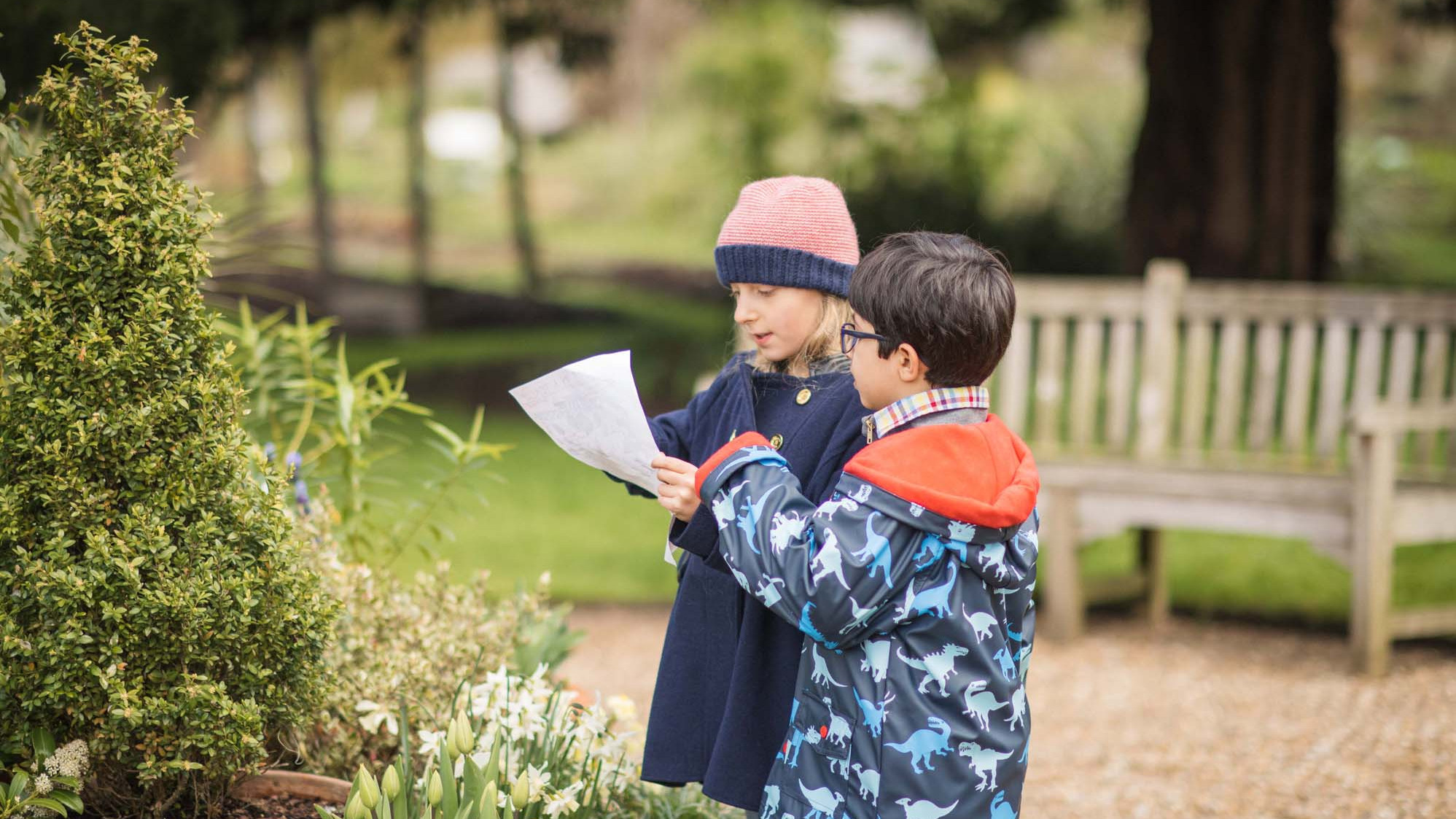Plant Hunters
Armed with a map, scientist’s notebook and magnifying glass, students will investigate the different environments in which plants live and identify some of the adaptations that have allowed plants to colonise these environments.
Approximate Half-Day Schedule
Introduction to Chelsea Physic Garden, plant hunters and the plant hunters challenge.
In small groups facilitated by the CPG Learning Team and school teachers, children will find plants in the garden that span seven continents and several different environments (marsh, woodland, tropical, mountain, hot desert, and cold desert). Students will take notes, draw sketches and collect stamps in their plant hunters’ passport
Students will return to the classroom and feedback on the information they collected referencing the locations on a globe where specific plants grow.
National Curriculum Links (NCL)
identify that most living things live in habitats to which they are suited and describe how different habitats provide for the basic needs of different kinds of plants and how they depend on each other (Science – Year 2)
identify and name a variety of plants in their habitats, including microhabitats (Science – Year 1)
use world maps, atlases and globes (Geography – KS1 and KS2)
describe and understand key aspects of climate zones and biomes (Geography – KS2)
to use drawings to record their observations and review their ideas (Art – KS1 and KS2).
Pre-visit Ideas
Introduce Botanical Gardens, https://www.kew.org/read-and-watch/what-is-a-botanic-garden, and Chelsea Physic Garden, to your students https://www.youtube.com/watch?v=9FkiXPZUiw8.
Introduce plant hunters using the following video from Kew Gardens https://www.youtube.com/watch?v=Sp4k0Ux0H8M.
Study the parts of a plant (root, stem, leaf and flower) and their main functions. This will ensure students have a good basic understanding of plants before we start considering plant adaptations during the visit to the garden. There is a fantastic resource with lesson ideas and full resources from Science and Plants for Schools (SAPS) which can be found using the following link https://www.saps.org.uk/attachments/article/1373/SAPS%20book%201%20-%20Parts%20of%20a%20Plant%20-%202016.pdf
Watch some of the amazing TedEd videos about plants and complete their online lessons.
Post-visit Ideas
Complete the Chelsea Physic Garden Plant Hunters revision quiz, https://forms.gle/7h1nai27kfYe69wq9.
Study the world’s biomes in more detail using the Missouri Botanical Garden website, http://www.mbgnet.net/index.html
Sort a collection of plants based on their climatic requirements (real plants or images of plants could be used). Climate vocabulary could vary depending on the ability of the students (hot, warm, sunny, humid, dry, cold, wet, and shady). Students should justify how they have categorised the plants.
Consider completing one of the lessons offered on the Rainforest alliance website, https://www.rainforest-alliance.org/curricula
“In 2017 we have been lucky enough to have received £86,300 over three years from the City of London Corporation’s charitable funder, City Bridge Trust.”

